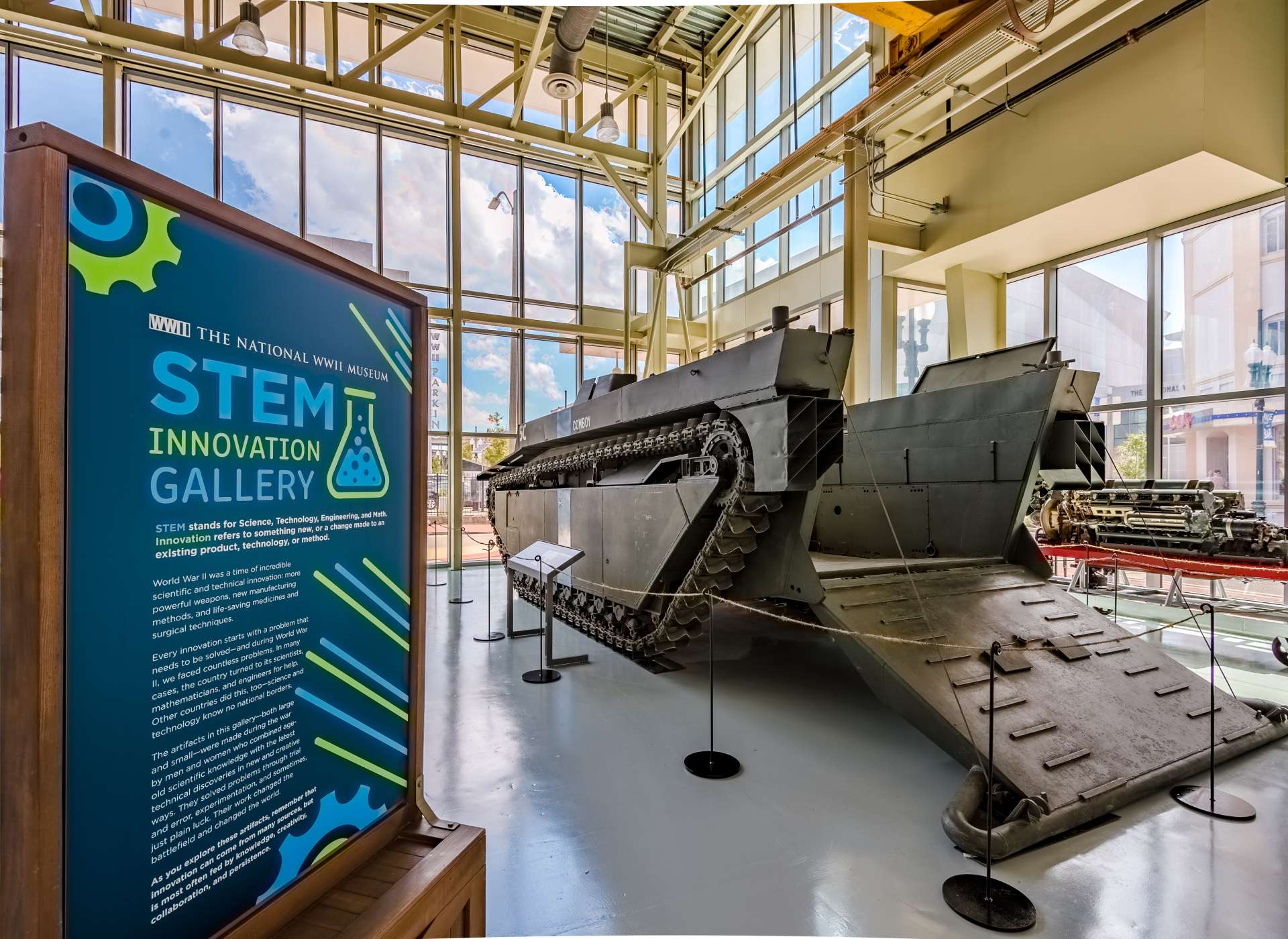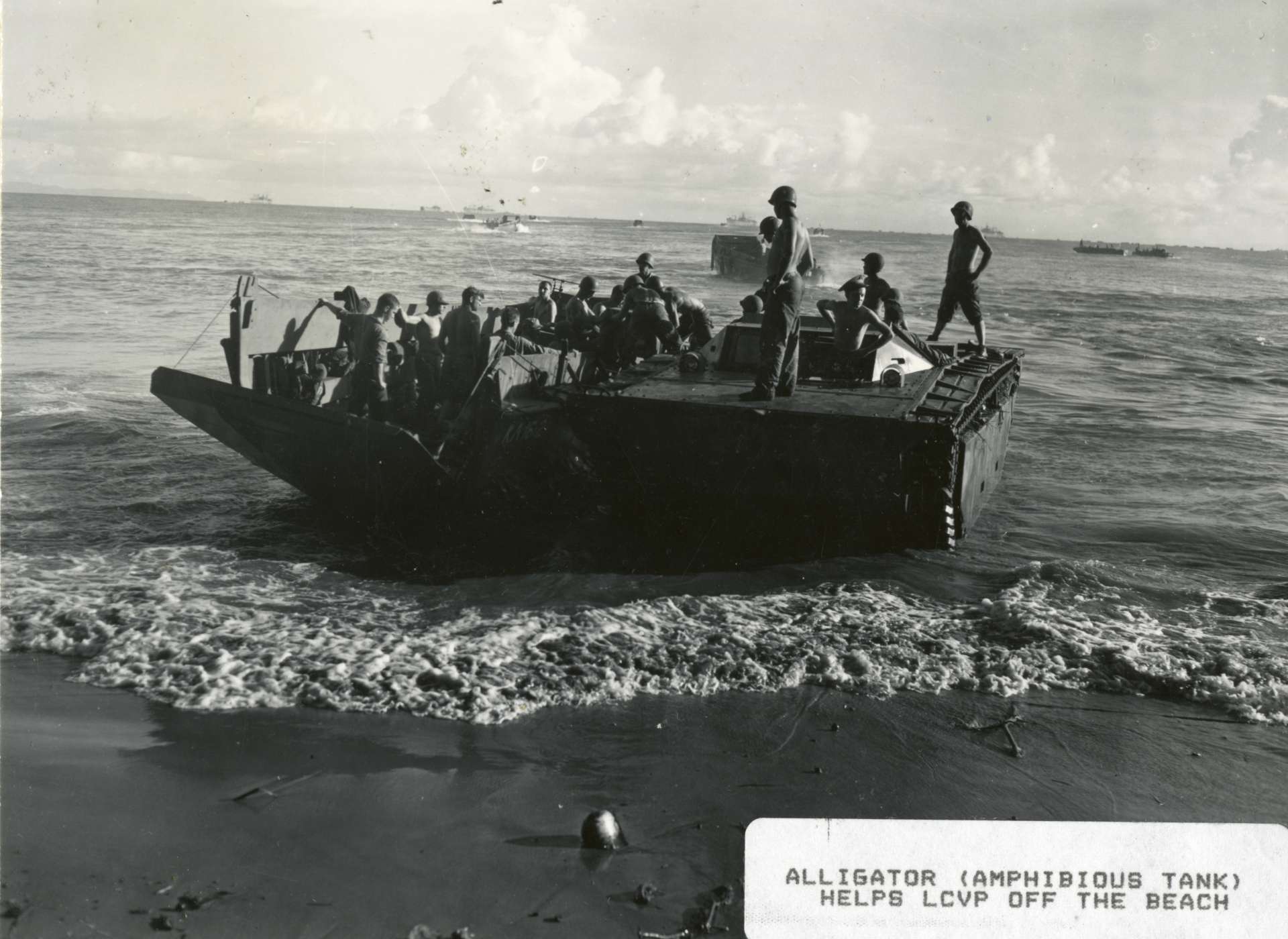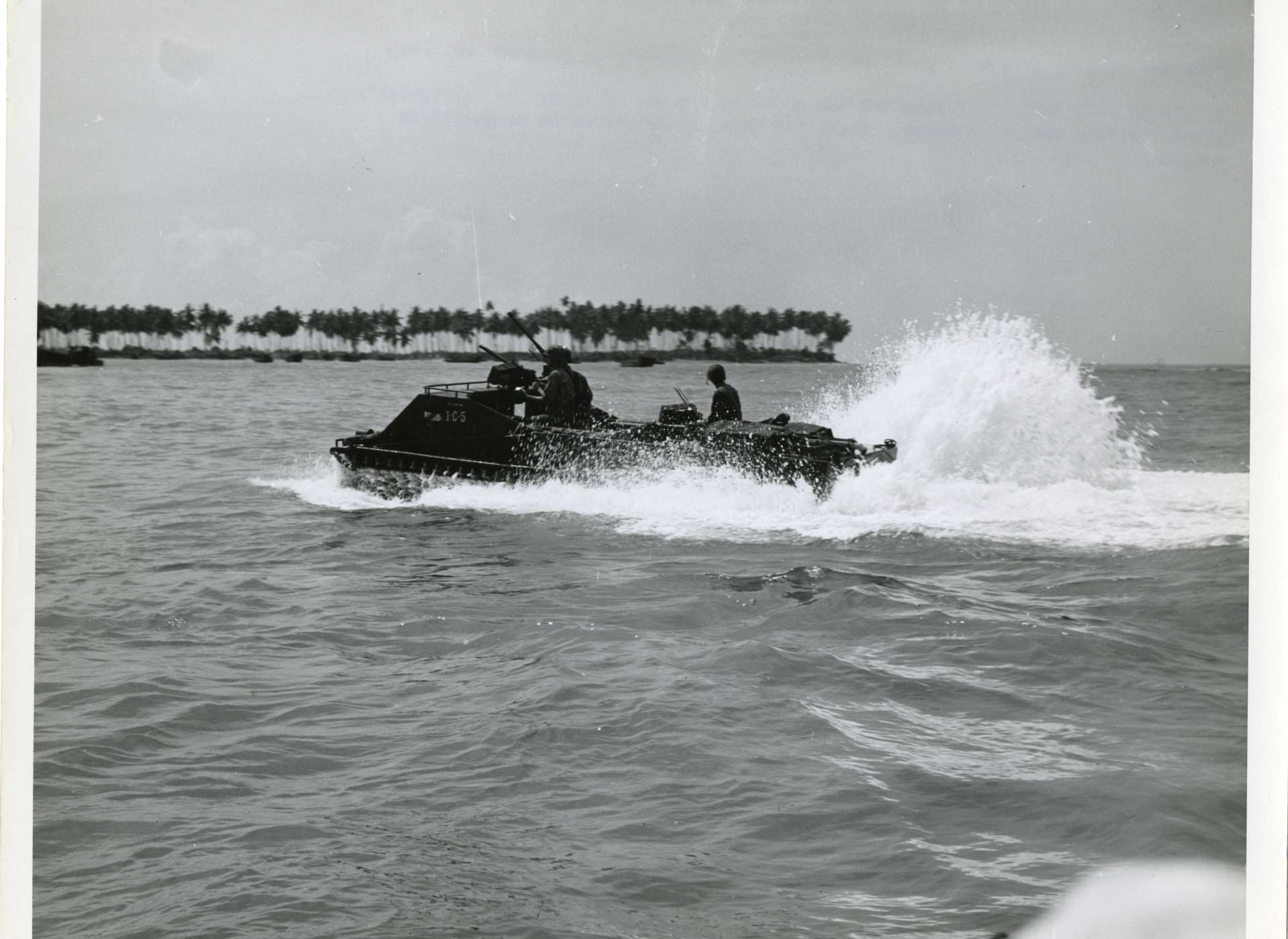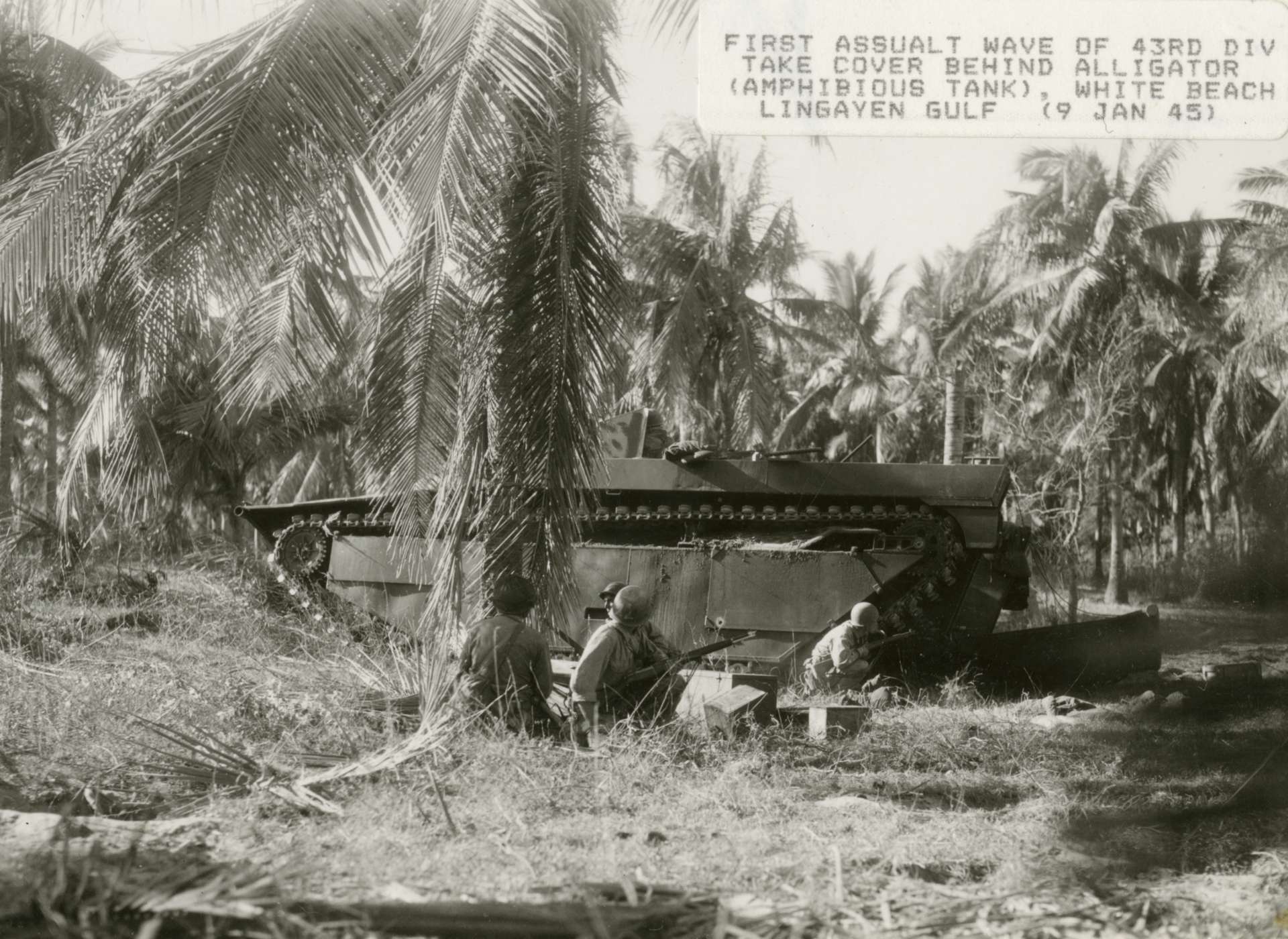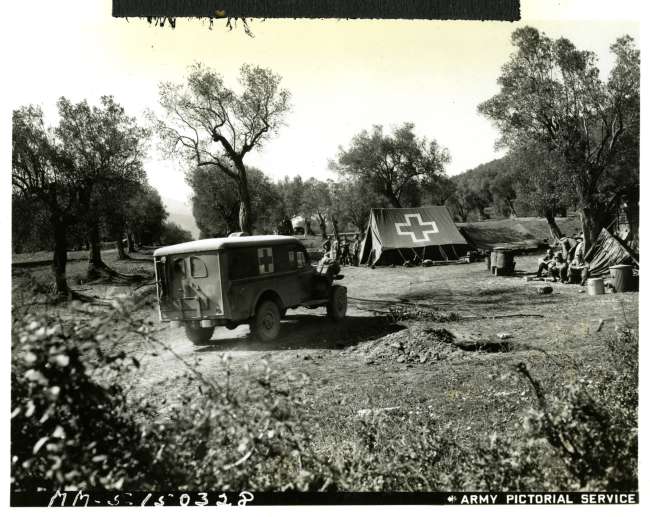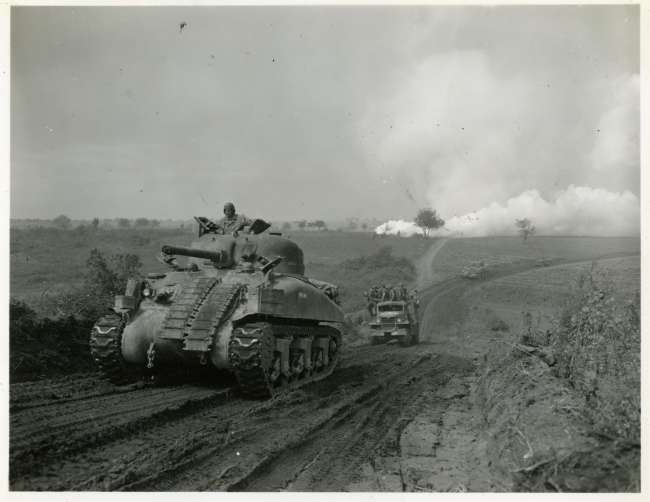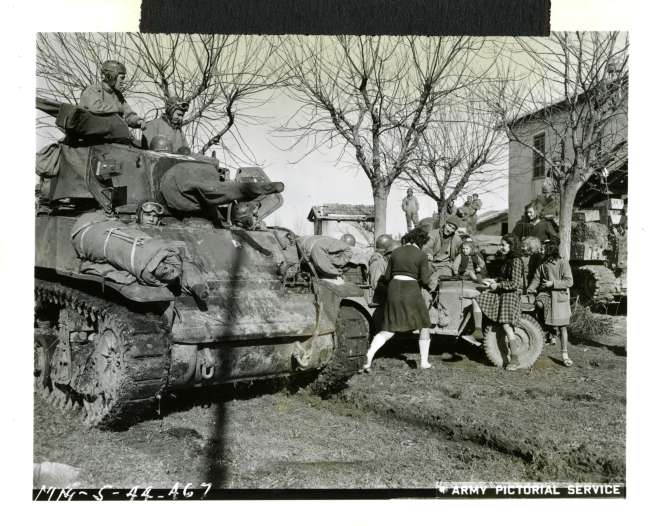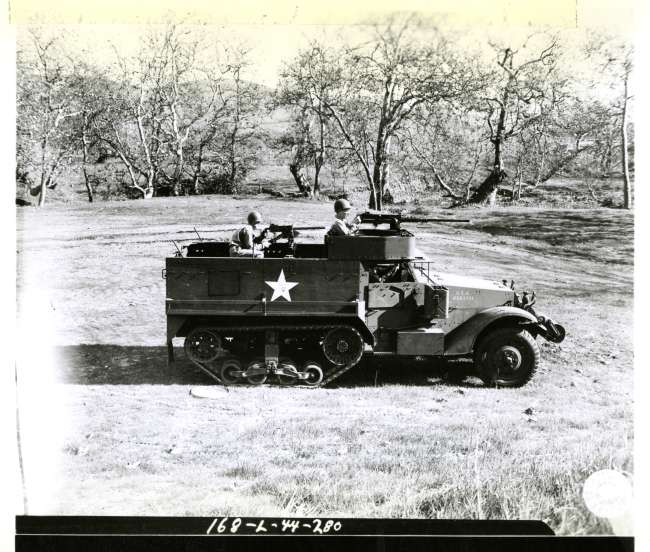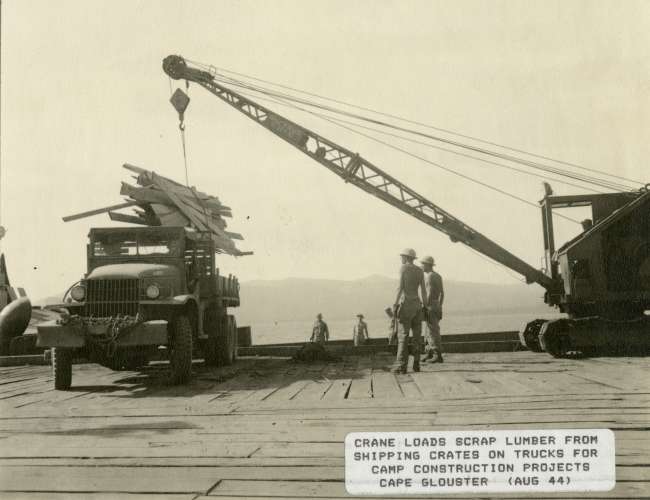Most landing craft are designed to deliver troops onto open beaches. But many Pacific islands held by the Japanese during the war were surrounded by jagged coral reefs. These reefs could rip up wooden-bottomed boats. A new design was needed.
In 1935, civlian engineer Donald Roebling designed a tracked vehicle to rescue people in flooded areas after hurricanes. He called it the Alligator. When World War II broke out, Roebling adapted his design for the Navy and Marine Corps. This LVT4 (Landing Vehicle Tracked) uses its cup-like metal tracks to "swim" through the water and "crawl" over obstacles, such as coral reefs. Its armored contstruction protected the men inside, and its rear ramp made exiting quick when facing incoming Japanese fire. For his innovative contribution to winning the war in the Pacific, Roebling was awarded a Certificate of Achievement from the Navy and a Medal of Merit from President Harry Truman.
The Food Machinery Corporation made 18,000 LVTs in their Florida, Missouri, and California factories. This one was made in St. Louis. It weighs 16.5 tons and can travel up to 25 mph on land and 7 mph in water.
More Vehicles
-
Dodge WC-54 Ambulance
Produced from 1942 to 1944, the Dodge WC-54 was the standard US ambulance. Roof-mounted slings and folding-bench seating provided room for four stretchers or six seated patients.
-
M4 Sherman Tank
The Sherman tank was the most commonly used American tank in World War II. More than 50,000 Shermans were produced between 1942 and 1945. They were used in all combat theaters—not only by the United States, but also by Great Britain, the Free French, China, and even the Soviet Union.
-
M3A1 Stuart Tank
The US Army began development of a light tank in the early 1930s. After a number of models which progressively increased armor and fire power, the M3 series was initiated in July 1940. Provided to British forces as part of the Lend-Lease Act, the M3 first saw combat with British forces in North Africa in November 1941. The British found the M3 to be under-gunned, but were so pleased with its mechanical performance that they nicknamed it “Honey.”
-
White M3 Half-Track
As modern armies became mechanized, they needed to find ways to transport material across uneven terrain. One solution, developed by several countries during World War II, was a truck with wheels in the front and tracks in the back to help drive it over rough country—the “half-track.”
-
CCKW Hard Top
Trucks such as this 2.5-ton vehicle played vital logistical roles—mostly famous in the Red Ball Express, when over 5,000 vehicles maintained supply lines to the front-line forces after the D-Day landing. Most drivers in the convoy were African American, reflecting a segregated military in which black troops were often relegated to non-combat, but essential, roles.
